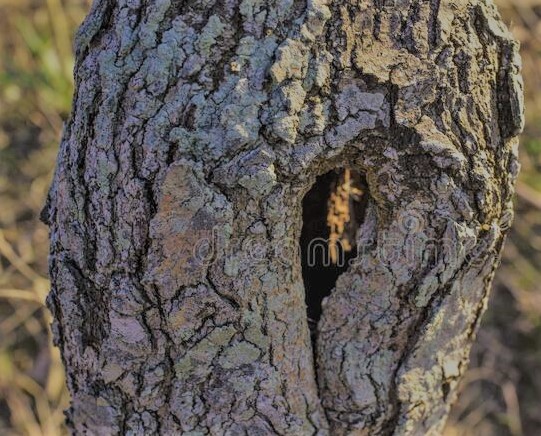Rapid Biodiversity Evaluation of the Arboreal Termites in Kano University of Science and Technology, Wudil, Nigeria
Abstract
 Abstract Views: 226
Abstract Views: 226
A rapid biodiversity evaluation of arboreal termite was carried out on the campus of Kano University of Science and Technology, Wudil. Three different trees which include Mangifera indica, Azadirachta indica and Khaya senegalensis were selected from three different sites (campus new site, premises of administrative offices and commercial area) on the campus and examined for termite activity, either arboreal nests or mud tubes which indicated infestation by the termites. Using a soft brush termite samples were collected into a labeled sampling bottle containing 10% formalin solution by cutting open the mud tubes and the nests with a forceps on the trees. A total of one hundred and twelve (112) individuals termites were samples were collected during the study belonging to five species: Coptotermes sp., Microtermes sp., Odontotermes sp., Amitermes sp. and Nutitermes sp. The Coptotermes sp. are the most abundant species both on the trees and the sites. Khaya senegalensis has the greatest diversity of the termite fauna as compared to other trees while campus new site (site A) also has greatest diversity. Coptotermes sp are insects of agricultural economic importance and feed on dead wood; therefore, they are insect pests of these trees and other building structures on the campus.
Copyright (c) The Authors
Downloads
References
Mitchell JD. Termites as pest of crops, forestry, rangeland and structures in Southern Africa and their control. Sociobiology. 2003;40: 47-69.
Cranshaw W, Redak R. Bugs Rule: An Introduction to the World of Insects. Princeton, New Jersey: Princeton University Press; 2013: 412
Ogedegbe ABO, Eloka EV. Biodiversity of termites on farmlands in Ugoniyekorhionmwon, Orhionwmon local government area, Edo State, Nigeria. Int J Pure Appl Sci Technol. 2015;27(2): 65-76.
Osipitan AA, Oseyemi AE. Evaluation of the bio-insecticidal potential of some tropical plant extracts against termites in Ogun state, Nigeria. J Entomol. 2012;96: 257-265.
Wekhe C, Ugbomeh AP, Ebere N, Bawo DDS. Subterranean termites of a university environment in Port Harcourt, Nigeria, Asian J Biol. 2019;8(1): 1-10.
French JRJ, Ahmed BM. Biomimicry of termite social cohesion and design to inspire and create sustainable system. In: Pramatarova L, ed. On Biomimetics. Rejeka, Croatia: In Tech; 2004: 571-586.
Dokurugu M, Baatuuwie NB, Aalangdong OI. Indigenous knowledge of termite control: a case study of five farming communities in Gushegu district of Northern Ghana. J Entomol Nematol. 2012;4(6): 58-64.
Ibrahim BU, Adebote DA. Appraisal of the economic activities of termite. Bayero J Pure Appl Sci. 2012;5(1): 84-89.
Christopher M, Jacob Y, Bruno N. Damage caused by termites (Isoptera: Termitidae) in coconut nurseries of Rufiji District, Tanzania. Int J Agric Sci Res. 2013;2(7): 227-233.
Malaka SLO. Termites in West Africa. Lagos, USA: University of Lagos Press; 1996: 165.
Ugbomeh AP, Membere O, Efuka A, Bawo DDS. A rapid survey of the arboreal termites in a University environment in Port Harcourt, Nigeria. J Basic Appl Zool. 2019;80(29): 2-6.
Donovan SE, Eggleton P, Bignel DE. Gut content analysis and a new feeding group classification of termites. Ecol Entomol. 2001;26: 356-366.
Kambhampati S, Eggleton P. Taxanomy and Phylogeny of Termites. New York: Kluwer Academic Publishers; 2000: 1-23.
Nwosu LC, Akor JB. Termite diversity, agronomic implications and control strategies in farming district, Naka, Benue State, Nigeria. Niger J Agric Food Environ. 2018;14(1): 20-24.
Bong JCF, King PJH, Ong KH, Mahadi NM. Termite assemblages in oil palm plantation in Sarawak, Malaysia. J Entomol. 2012;9(2): 68-78.
Kemabonta KA, Balogun SA. Species richness, diversity and relative abundance of termites (Insecta: Isoptera) in the University of Lagos, Lagos, Nigeria. FUTA J Res Sci. 2014;(2): 188-197.

Copyright (c) 2020 Jibril Abdullahi, Jamila Bafa Saleh

This work is licensed under a Creative Commons Attribution 4.0 International License.
BSR follows an open-access publishing policy and full text of all published articles is available free, immediately upon publication of an issue. The journal’s contents are published and distributed under the terms of the Creative Commons Attribution 4.0 International (CC-BY 4.0) license. Thus, the work submitted to the journal implies that it is original, unpublished work of the authors (neither published previously nor accepted/under consideration for publication elsewhere). On acceptance of a manuscript for publication, a corresponding author on the behalf of all co-authors of the manuscript will sign and submit a completed the Copyright and Author Consent Form.









